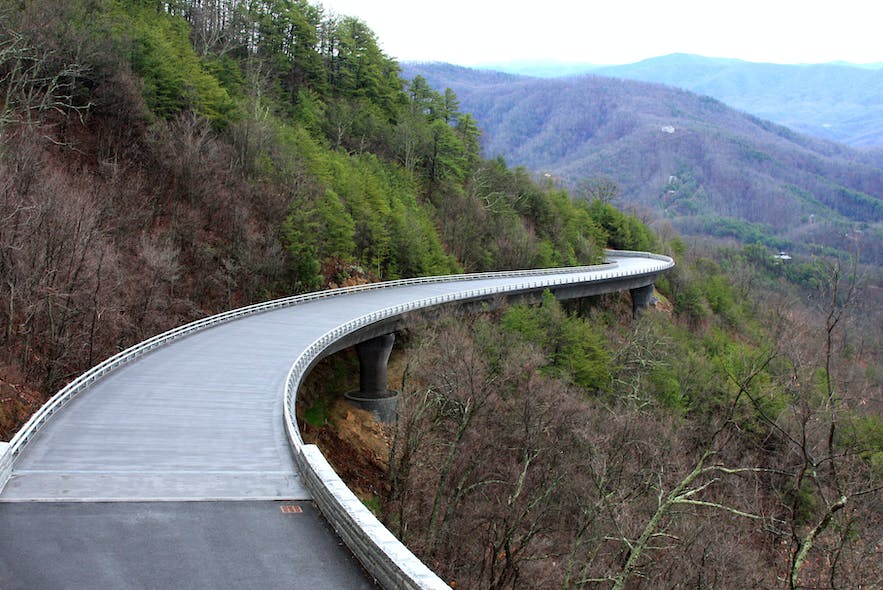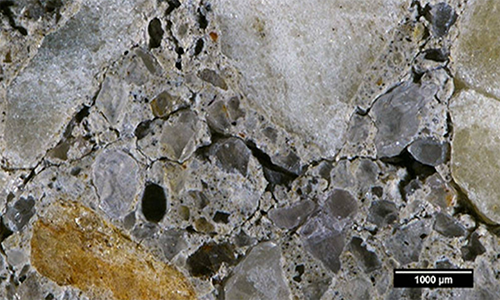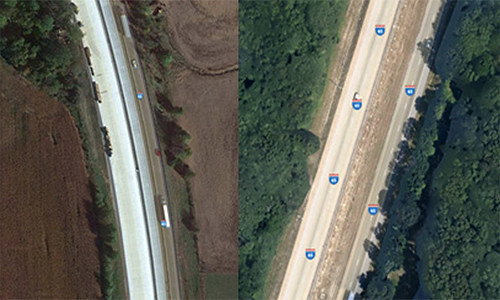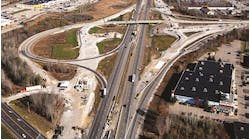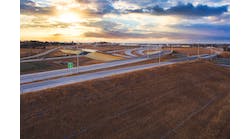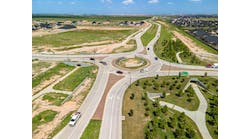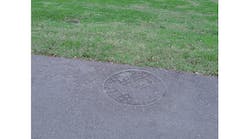Project: Foothills Parkway Bridge No. 2
Location: Great Smoky Mountains National Park (Tenn.)
Owner: National Park Service
Designers: Eastern Federal Lands Highway Division; Corven Engineering
Contractors: Bell & Associates; Corven Engineering
Cost: $26 million
Start Date: Jan. 15, 2010
Completion Date: Aug. 11, 2012
King of the mountain
Bridge project overcomes tough terrain
Who would have thought the Missing Link would be found in Tennessee?
The Missing Link, in this case, is a 1.6-mile portion of the Foothills Parkway in Great Smoky Mountains National Park. Commissioned by Congress in 1944 as a 72-mile scenic route, the Foothills Parkway remains unfinished today, with only 22.6 miles completed. It is the oldest unfinished highway project in the state of Tennessee.
More specifically, the Missing Link is in Section 8E, a 9.7-mile portion of the Foothills Parkway that is nearly complete. Ten bridges make up the Missing Link. Bridge No. 2 is the largest span in the section, with a series of reverse curves that cut through some of the steepest terrain—vertical grades range from 6.75% to 8.02%.
The site itself was far and away the biggest challenge on the project, according to Hratch Pakhchanian of the Eastern Federal Lands Highway Division (EFLHD). As a result of the steep grade on the site, workers had to be extremely careful where and how they cut.
“Any disturbance of the ground could cause instability,” Pakhchanian told Roads & Bridges. “The slightest cut could take out a whole side of the mountain.”
Geography and environmental concerns restricted the available working space on the jobsite as well. A previous environmental assessment confined the scope of work to the limits of the bridge itself, which is only 37 ft wide. Topping off the laundry list of difficulties, workers only had access from the eastern approach.
Faced with these challenging conditions, the project team decided to precast Bridge No. 2. (The other bridges in the Missing Link have all been cast-in-place.) The superstructure is made of 92 segments, each one unique due to the geometry of the site.
To facilitate construction on such a difficult jobsite, EFLHD constructed falsework and a specialized gantry crane, dubbed the Segment Walker. Crews bored holes for micropiles for the falsework foundations. Once established, the crane traveler attached directly to the falsework and progressed forward throughout construction, lowering the precast pier and superstructure segments into place. “We could not have built this bridge without it,” Pakhchanian said.
The new bridge has an expected design life of 100 years. As of press time, construction was continuing concurrently on bridges 3 through 7. EFLHD and the National Park Service are currently on target to open the Missing Link to traffic in 2016. R&B
